I have always concentrated on landscapes, but every so often, and
 |
| Comet PanSTARRS |
The variety of photography is almost endless. If you are in a bit of a “Stick Season Slump”, consider something from my brief list of possibilities. Some of these only require a shift in focus, while others may benefit from special equipment. I always like an excuse to get new gear, but they all provide an opportunity to learn new stuff. What follows are random incomplete reflections about only a few of the many ways to get a fresh perspective on your photography. Fortunately, all the information you need is just a Google search away. Fair warning, I have tried all of these modes of photography, but I must admit that I am expert in none. That's what makes them exciting.
Get Out of Your Comfort Zone
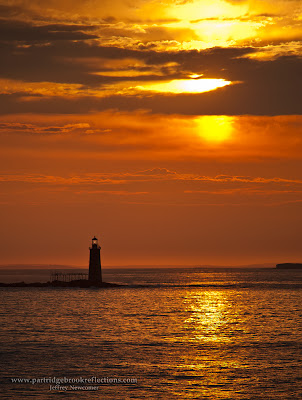
We do tend to get into ruts. I keep my trusty 24-105 lens on my camera far too much. Just pulling something else from my bag, whether it is a wide angle, macro or my fast 50mm portrait lens, can be refreshing. Also try changes in perspective. Crawl on the ground or get up high. Of course a more expensive way to leave your comfort zone is to take a trip, but it doesn’t have to break the bank. I've enjoyed recent travel out West and along the Danube River, but for me, a trip to the Maine Coast is always refreshing.
 |
| Teton Sunset |
Star Photography
I have recently returned to star photography. I have played with star
 |
| Mt Monadnock Trails |
Star Track Photography
Searching for the Milky Way
Time lapse
Time-lapse photography is another technique that reveals what our eye cannot see. The changing patterns of nature or frenetic human activity can be compressed into short intervals that distill the action, making subtle patterns clear. All you need to make time-lapse videos is an intervalometer to time the shutter releases and software to assemble the images into a movie. Of course as with almost everything here a sturdy tripod is a must. One other point. Time-lapse videos take hundred of images. At the standard 24 frames per second, a 30 second video will require 720 images. Because I get concerned about wearing out the shutter in my primary camera, I have dedicated my old Canon 5d to time-lapse service.
Trimming the Tree (YouTube:First Try at Time-lapse: Sorry)
Video
The ability to capture high quality video from your digital camera is a great new feature, but I can testify that video requires an entirely different skill set than conventional still photography. Although DSLR cameras can record high definition video they have limitations compared to a dedicated video cameras. Most notably, continuous focus is difficult to control smoothly, but also DSLR are not equipped to record quality sound. Over the last year I have been contributing video to the upcoming Mt Monadnock documentary, but given the limitations of my Canon 5d Mark II my video clips have been primarily set clips for background images (B Roll: As above). You can
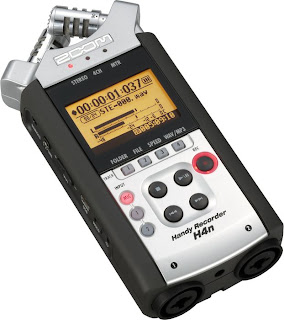 spend a lot of money to supplement the video capabilities of your DSLR. Basic equipment includes a tripod, preferably with a fluid head for smooth panning and a follow focusing attachment. One of the most important elements of good video is good sound. A quality external microphone and recording device are key. I use a Rode microphone attached to a Zoom H4n field recorder. Of course, when you are finished, there are many options for video editing. There is a lot to learn to get decent video, but that's the fun.
spend a lot of money to supplement the video capabilities of your DSLR. Basic equipment includes a tripod, preferably with a fluid head for smooth panning and a follow focusing attachment. One of the most important elements of good video is good sound. A quality external microphone and recording device are key. I use a Rode microphone attached to a Zoom H4n field recorder. Of course, when you are finished, there are many options for video editing. There is a lot to learn to get decent video, but that's the fun. Wildlife
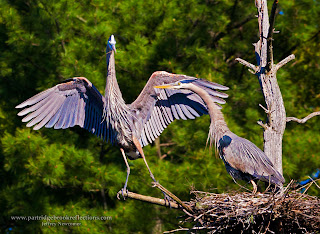
If, like me, you are primarily a landscape photographer, an exploration of wildlife photography can be a great new challenge. I have great respect for the patience and dedication of those who get amazing wildlife shots by siting out in the cold for hours. As for me, I like my wildlife stationary and predictable and close to my car. In the spring, the birds keep close watch on their nests and that is a great time for me. Sadly my favorite Blue Heron nest on Harris Pond in
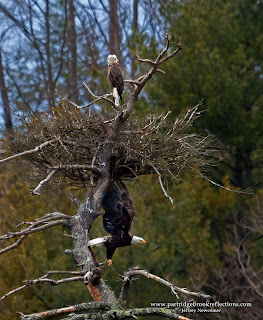 Westmoreland, NH is gone this spring, but I am watching an eagle nest on the Connecticut River. I'm hoping that they will settle in to raise a family. A long lens is the primary requirement of wildlife. I found that my 400mm isn't quite long enough to capture detailed images of the eagles from across the river. I will try to sneak closer once they are settled, but I don't want to disturb them at this critical time. I also got a 2x Tele-Extender, but will need good light to off-set the two stops I loose with the extra reach. Of course wildlife may also be as close as your couch. I hear that a few people on the web like pictures of cats and dogs.
Westmoreland, NH is gone this spring, but I am watching an eagle nest on the Connecticut River. I'm hoping that they will settle in to raise a family. A long lens is the primary requirement of wildlife. I found that my 400mm isn't quite long enough to capture detailed images of the eagles from across the river. I will try to sneak closer once they are settled, but I don't want to disturb them at this critical time. I also got a 2x Tele-Extender, but will need good light to off-set the two stops I loose with the extra reach. Of course wildlife may also be as close as your couch. I hear that a few people on the web like pictures of cats and dogs. Get in Close
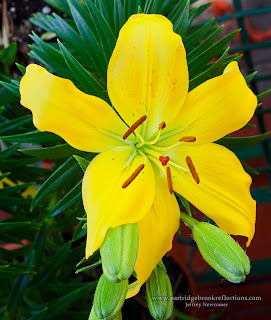
Macro photography opens an entire new world of opportunities both in the natural world and at home. I love studying the detail of flowers and that is often done best in protected environments, such as at a greenhouses or at home. My annual pilgrimage to the beautiful greenhouses at the Walker Farm, In Dummerston, Vermont has become a seasonal tradition. This time of year the early spring flowers are a welcome source of material as well. The greatest challenge of macros
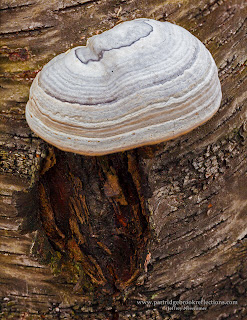 is the management of the often painfully shallow depth of field. Stopping down on the aperture and using a tripod can help, but focus stacking in photoshop or other programs can make a big difference. Equipment for macro photography can range from cheap to prohibitively expensive. Extension tubes can be effective and cost almost nothing, but, I have to admit that since I sacrificed for a wonderfully sharp macro lens I haven't gone back to the tubes.
is the management of the often painfully shallow depth of field. Stopping down on the aperture and using a tripod can help, but focus stacking in photoshop or other programs can make a big difference. Equipment for macro photography can range from cheap to prohibitively expensive. Extension tubes can be effective and cost almost nothing, but, I have to admit that since I sacrificed for a wonderfully sharp macro lens I haven't gone back to the tubes. Infrared
Infrared photography provides a fresh look by recording an otherwise invisible portion of the electromagnetic spectrum.
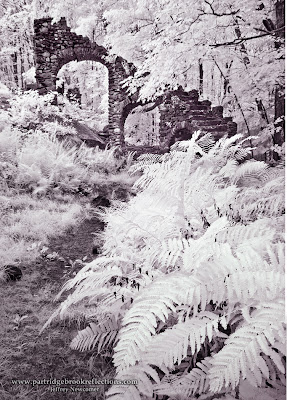 Glowing foliage and inky dark skys can breath new life into dull flat scenery. Shooting in infrared is best with luxuriant foliage, so winter and early spring are not the best seasons. With many digital cameras infrared can be shot with dense, nearly impenetrably dark filters, but images usually need to be framed and focused before the filters are adding and the long exposures make a tripod a necessity. Happily a much more elegant solution is available. Your lonely, old camera can be modified to shoot infrared. I did this with my old Canon 20D and turned a dusty doorstop into a gateway to a whole new way of seeing. I've found that on days when the light is hopeless, I can still get some interesting shots by harvesting among the longer wavelength.
Glowing foliage and inky dark skys can breath new life into dull flat scenery. Shooting in infrared is best with luxuriant foliage, so winter and early spring are not the best seasons. With many digital cameras infrared can be shot with dense, nearly impenetrably dark filters, but images usually need to be framed and focused before the filters are adding and the long exposures make a tripod a necessity. Happily a much more elegant solution is available. Your lonely, old camera can be modified to shoot infrared. I did this with my old Canon 20D and turned a dusty doorstop into a gateway to a whole new way of seeing. I've found that on days when the light is hopeless, I can still get some interesting shots by harvesting among the longer wavelength. Infrared, Seeing Photography in a Different Light
My list goes on, but I think this is a good place to stop my ramblings. I will leave other options like street photography and portraiture for you to explore on your own. My intention here is only to get you thinking about fresh approaches for your photography. So the next time you find yourself moaning about having nothing to shoot, apply a quick dope slap and get out to try something new.



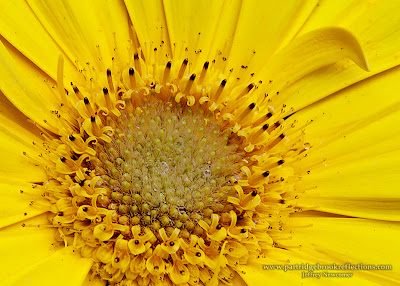

I am a photography lover and i have just started doing it as a part of my hobby. I am always searching for new ideas of trying different things in photography.This blog gives has some of the very awesome tips to to photography that i would definitely going to try
ReplyDeletebartech focus kit | camera support